Filling the Gap: AMOLED and LCD from 2010 to 2012
by Joshua Ho on July 26, 2014 6:00 AM ESTHTC Rezound
The Rezound is one of the last devices that hit the market before devices regularly saw color accuracy testing and closer evaluation of grayscale performance. Subjectively, this display is still great even today. While the Rezound’s display is supposedly S-LCD (implying *VA), the viewing angles are much better than what was seen on the Desire HD. The one issue here is that the display isn’t laminated to the glass lens, so at extreme angles the display quality isn’t as good as what we see on S-LCD2 or S-LCD3 from phones like the HTC One X. At any rate, it’s very obvious that HTC has put a large emphasis on display with this device.
While luminance is dramatically improved over the Desire HD, I suspect that brightness was clamped to some extent again to alleviate battery life issues. Contrast isn’t great here either, at 733:1. As before, there’s no dynamic contrast active here to try and artificially boost contrast. Modern LCD displays have around 1000:1 typical contrast, so this is just a bit worse, all things considered.
HTC definitely didn’t do a perfect job in grayscale once again, as there’s still too much blue and green, but white point is at a reasonable level compared to the wildly unbalanced white points that we saw with the Galaxy S2. Things are also significantly improved here relative to the Desire HD.
In the saturation sweep, HTC did an incredible job calibrating the display. It’s quite clear to me that HTC made display a priority with this device. There’s a hint of saturation compression, but overall things are very close to perfect. This is definitely a leap ahead of AMOLED at the time.
Unfortunately, the Rezound falls a bit flat in the ColorChecker. Poor grayscale calibration definitely didn’t help with the average, although there is significant error elsewhere. Of course, this is from the lens of the present. At the time, it seems that HTC was making a concerted effort to do things right, even though no one was truly paying attention to display accuracy yet and reviewers seemed to be impressed by blue white points and intensely oversaturated colors.
Final Words
Looking through this new information, understanding the past is now much easier in terms of display. While I was only able to test Samsung and HTC devices, they serve as a relatively accurate barometer for trends in the rest of the industry. As the past is an excellent predictor for the future, a few trends are evident. First, AMOLED has had far more progress than LCD, although checkered due to the pressure for higher pixel density displays and relatively little pressure (at first) to improve color accuracy. Second, while LCD has been slower to advance it has also started at a far better place. One of the chief issues seems to have been controlling gamma/grayscale color balance, although this has been steadily improving throughout the industry. Color gamut and saturation sweep accuracy has generally been acceptable in LCD, although there seems to be a bit of a cyclical relationship as consumers favor wildly inaccurate colors for showroom appeal. LCD seems to have stagnated in contrast, with relatively little change in static contrast ratios over the past few years, and brightness seems to be limited to around 600 nits in practice, barring unconventional subpixel layouts.


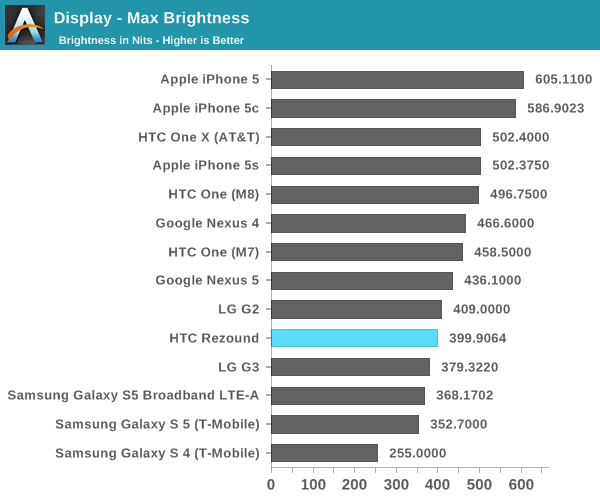
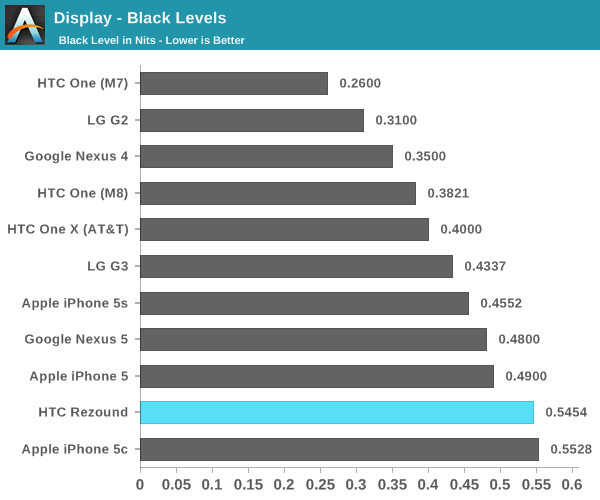
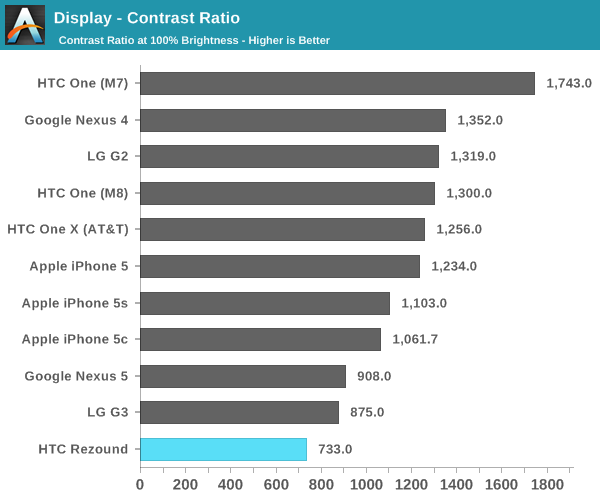
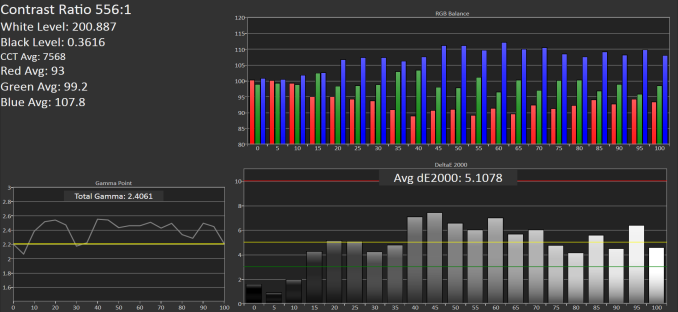
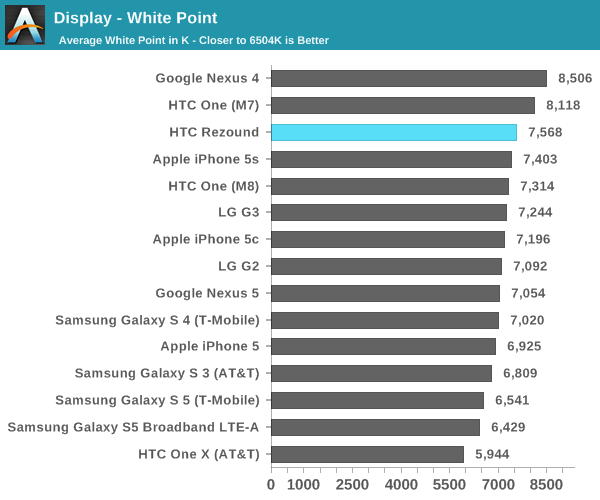

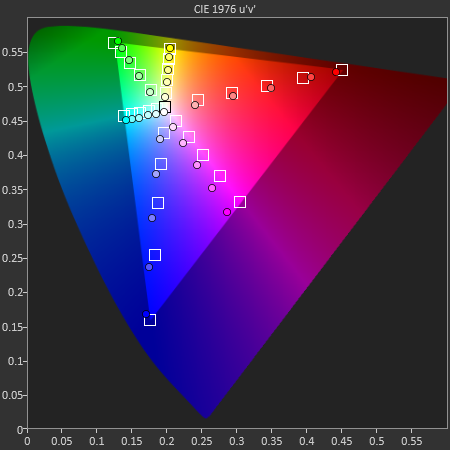
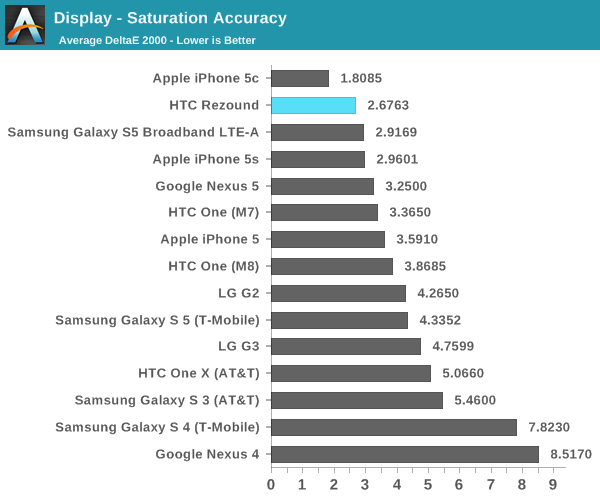

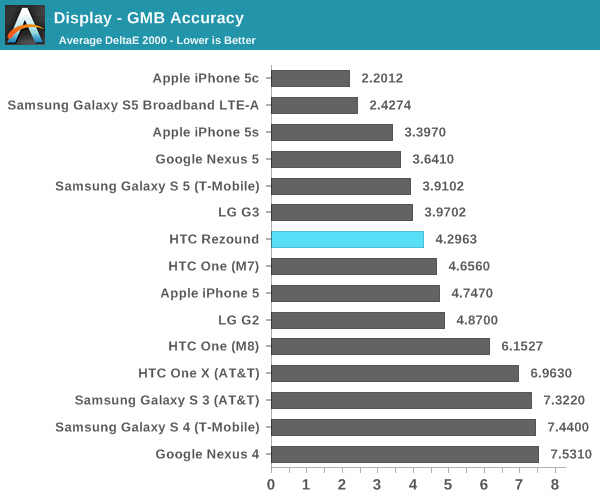








72 Comments
View All Comments
Mand - Thursday, July 31, 2014 - link
Were the Samsung phones actively used since they first got into your hands? Or are these phones that were sitting idle since 2010 and 2012?I ask because OLED still has significant lifetime issues, where the individual color channels will decay at different rates based on usage and how bright they're being driven. If these are phones that have been running their displays actively for years, then it's not a fair comparison to new phones, regardless of model.
In other words, be careful about generalizing the Galaxy S's AMOLED performance compared to the Galaxy S4 or S5 based on this data. If age has degraded the S's performance, measuring it now doesn't give an accurate assessment of the quality of the display.
JoshHo - Saturday, August 9, 2014 - link
Actually, if anything the calibration should've improved over time. While I'm unsure of how the GS5 and newer generation panels will age (we don't have data on whether there's aging compensation), the Galaxy S and S2 were shipped with incredibly blue white points. They should approach ~6504k as they age because blue subpixels are the fastest to degrade.